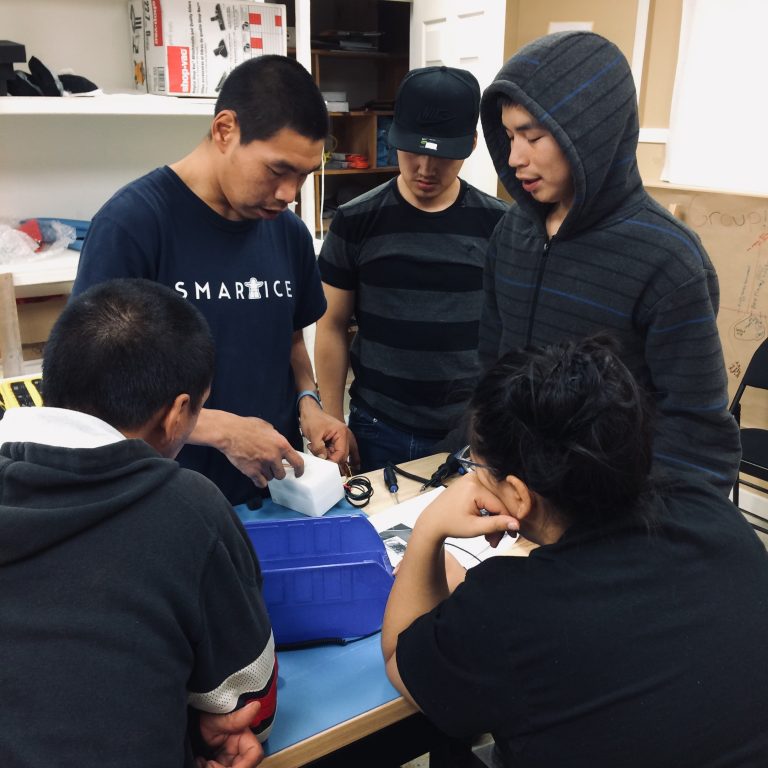For the first time, Inuit-built ice thickness sensors have been deployed in Nunavut
“It’s essentially a climate change adaptation tool that’s actually working in the communities.”

Lodged in the ice outside Qikiqtarjuaq are two new ice thickness sensors, the first of their kind, built by Inuit youth in Nain, Nunatsiavut.
The eight-foot-long buoys extend from the water into the air, measuring ice and snow thickness, which is then relayed daily to a satellite that sends the information back to the community.
“It’s essentially a climate change adaptation tool that’s actually working in the communities,” said Trevor Bell, founding director of SmartICE.
“There would be no need for SmartICE if it wasn’t for climate change.”
According to a 2010 survey of Nain residents, 75 percent of sea ice users could no longer predict ice conditions and one in 12 had fallen through the ice the previous winter.
Since then, sea ice levels have continued to shift.
“What the elders and hunters are telling us is that the changes that they’ve seen over the last decade are unprecedented and totally unpredictable,” said Bell.
SmartICE was developed to address these concerns by providing reliable, real-time information to those who use the ice.
The recent deployment of the Inuit-built smartBUOYs is something that has been years in the making, a process that began with dialogue.
“We worked with the communities and with Inuit, making sure that their knowledge and input into the technology was critical,” said Bell.
From there, prototypes were designed at Memorial University and then deployed for two seasons in Nain and Pond Inlet.
“Once we were confident that the prototype was good, we then took a look at how we could change the design of it, so that instead of professional technicians at the university assembling it, we can train Inuit youth,” said Bell.
For Jenny Mosesie, a Qikiqtarjuaq resident and SmartICE’s operations lead for the Qikiqtaaluk south region, this is an important step.
“It not only gives us training but it gives other Inuit opportunities to use this equipment.”
But the importance of the buoys doesn’t stop there. Mosesie highlights that they’re very important for smaller communities.
“The Inuit traditional knowledge of the sea ice has never been written in the past, but now using SmartICE we can track our traditional trails and say, yeah, we were right.”
Mosesie also points out that smartICE helps out a younger generation that doesn’t go out on the sea ice as much as earlier generations.
“It teaches them where the traditional trails are, where people are travelling and how thick the ice is around that area.”
The ice thickness data collected by the buoys will be available both on the Siku app and website.
Although the deployment of the buoys has just begun, so far they have been well received.
“When we were planning on deploying this smartBUOY in Qikiqtarjuaq, the advisory group and other members of the community were very excited to see it happening,” said Mosesie.
Last week the SmartICE team also deployed two buoys in Pangnirtung and over the next couple of months plan to deploy another 17 across six different Nunavut communities: Pond Inlet, Arctic Bay, Igloolik, Hall Beach, Cape Dorset and Sanikiluaq.
In the future, SmartICE hopes to be able to provide its services to any community that would like it.
